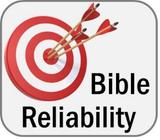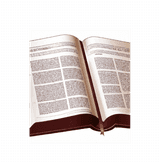Pro: Bible Reliability
Back to listing
The Christian Bible holds the distinction as the most widely circulated book in human history (five billion copies). The New Testament (NT) alone has been translated into more than 1,500 languages. Despite its unparalleled reading throughout history, the Bible’s fame does not guarantee its historical reliability. So why should we consider trusting the contents of the New Testament as true? Let’s investigate.
Summary
Why Is the New Testament Bible Considered a Reliable Document?
- It consists of 27 separate writings by nine different authors, vs. a single individual composing it.
- The authors of the NT were either firsthand witnesses of the life of Jeus, or close companions of those eyewitnesses.
- The original texts were written within 50 years of the actual events of Jesus’s life and those of his closest disciples.
- About 5,800 complete or fragmented Greek and 10,000 Latin ancient NT Bible manuscripts exist from the early Church period.
- Many historical factors and events described in the NT have been confirmed by secular and other non-biblical sources.
Background
The diversity of the New Testament is highlighted by its 27 individual documents being written by nine separate authors, and its reliability because those same authors were eyewitnesses of the life of Jesus, or close companions of those who were. In addition, these authors wrote the NT documents within 15–50 years after the events they describe, which adds to their historical credibility. The careful reporting of the New Testament scribes further enhances the NT’s credibility. For example, the Gospels of John and Luke reference more than confirmed historical facts, some of which have been verified many years after their writing. Interestingly enough, the New Testament also includes accounts of embarrassing incidents, as well as cases of apparently conflicting eyewitness testimony (although typically minor). Yet, rather than undermining the NT’s credibility, these conflicting or awkward elements strengthen it by demonstrating the honesty and transparency of the original authors. If the NT writers had conspired in a historical fraud, they would been motivated to eliminate potential conflicts or embarrassments in their editing.

Another crucial factor to consider: History demonstrates that all but one of Jesus’s apostles suffered a martyr’s death for proclaiming their Christian faith. If the NT Bible was a conspiracy of lies fabricated by Jesus’s early followers, why would they suffer for years and then willingly die for a cause they knew to be false? These factors coalesce to distinguish the historicity of the NT Bible from the fictional narratives of Greek or Roman myths.
Despite the loss or destruction of the original NT manuscripts, 5,800 complete or fragmented Greek manuscripts exist from the early Church, 10,000 Latin ones, and also 9,300 manuscripts in various other ancient languages. This volume exceeds by a factor of ten the surviving number of copies of any other ancient document (or compilation of documents). Through meticulous comparison of these historical handwritten copies, scholars have identified minor variations within the texts, typically noted as spelling or grammatical errors. According to many experts, the NT Bible, as published today, is 98%+ representative of its original content, of which the remaining 2% variance is documented in footnotes for your review at the bottom of each page in most Bibles.
Moreover, many major historical events noted in the NT have been substantiated by non-biblical Roman and Jewish writers of that same era, and/or by recent archeological discoveries. In the words of John Warwick Montgomery, a 20th-century lawyer and professor: “To be skeptical of the resultant text of the New Testament books is to allow all of classical antiquity to slip into obscurity, for no documents of the ancient period are as well-attested bibliographically as the New Testament.”
Summary

The New Testament Bible is considered the most historically reliable collection of ancient documents in human history, having been confirmed by both ancient non-biblical sources and recent archeological discoveries. This is important since the Bible, especially the New Testament Bible, is much more than just historical stories, poetry, or interesting philosophical discourses. For Christians, the Bible serves as a guide to life, given to us by the Creator of the universe and his Son. If you have time, take a look, especially at the NT Gospels (Matthew, Mark, Luke, and John), so that you can discover more about who Jesus is and what it means to make the Christian Decision.
Please follow the provided links to videos, documents, quotes, and books regarding further reference to explanations on why the New Testament Bible is the most reliable ancient document in history (i.e. compilation/collection of ancient documents). If you haven’t already, please consider making the Christian Decision and pursuing your role within the Christian story.
There's so much more!
You're asking the right questions, and now you want to dig a little deeper.
